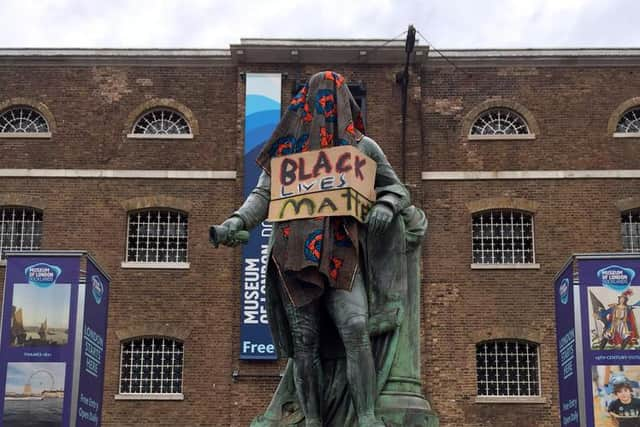Watch as Scottish slave trader’s statue removed from London Docklands
It comes days after thousands of protesters tore down a memorial to Edwards Colston, a slave trader guilty of forcibly transporting 84,000 people from Africa, from its plinth in the centre of Bristol, and threw it into the River Avon.
The Museum for London, which runs the docklands site, said the statue of Milligan had “stood uncomfortably” there in East London for a long time.
Advertisement
Hide AdAdvertisement
Hide Ad"The Museum, being another physical manifestation of slavery situated in an old sugar warehouse, constantly challenges the contentious nature of this history," it wrote on Twitter.
"The Museum recognises that the monument is part of the ongoing problematic regime of white-washing, which disregards the pain of those who are still wrestling with the remnants of the crimes Milligan committed against humanity," it added.
Robert Milligan, from Dumfries, was an 18th century Scottish slave trader and merchant, who owned two sugar plantations and 526 slaves in Jamaica by the time he died in 1809.
The Tower Hamlets Council said it would launch a review into other monuments and sites in its jurisdiction "to understand how we should represent the more troubling periods in our history".
Anti-racism protests across Scotland and the rest of the UK have sparked a wider debate about the commemoration of Britain’s imperial past.


Demonstrators in Edinburgh have demanded the removal of the statue of Henry Dundas from its column in St Andrew’s Square.
Dundas, a Tory politician who had a long association with the slave trade, and lobbied to delay its abolition, served as Secretary of State for War in 1806.
The city council leader, Adam McVey, insisted that he would feel “no great sense of loss” if Dundas’ statue was removed, but said he thought the decision should be taken in a democratic way.
A message from the Editor
Advertisement
Hide AdAdvertisement
Hide AdThank you for reading this story on our website. While I have your attention, I also have an important request to make of you.
With the coronavirus lockdown having a major impact on many of our advertisers - and consequently the revenue we receive - we are more reliant than ever on you taking out a digital subscription.
Subscribe to scotsman.com and enjoy unlimited access to Scottish news and information online and on our app. With a digital subscription, you can read more than 5 articles, see fewer ads, enjoy faster load times, and get access to exclusive newsletters and content. Visit https://www.scotsman.com/subscriptions now to sign up.
Our journalism costs money and we rely on advertising, print and digital revenues to help to support them. By supporting us, we are able to support you in providing trusted, fact-checked content for this website.
Joy Yates
Editorial Director
Comments
Want to join the conversation? Please or to comment on this article.